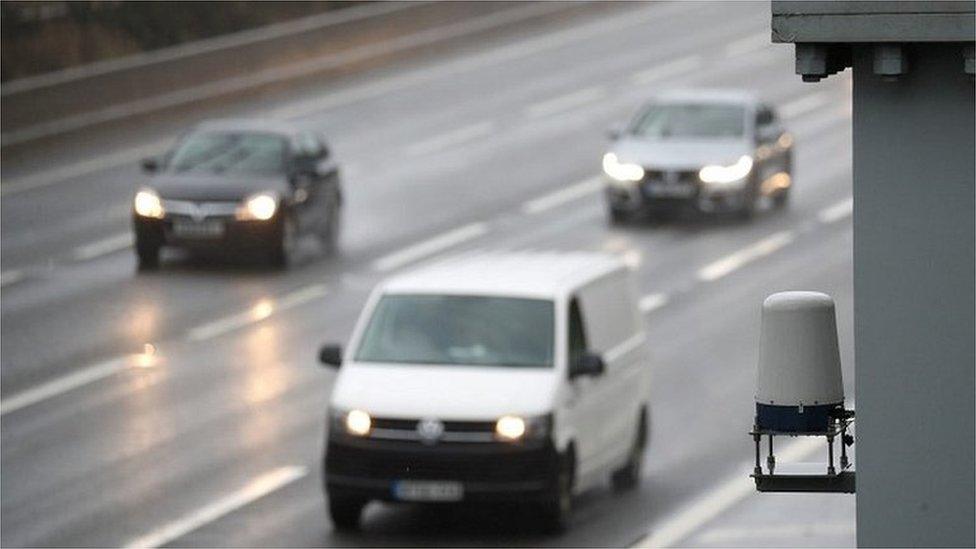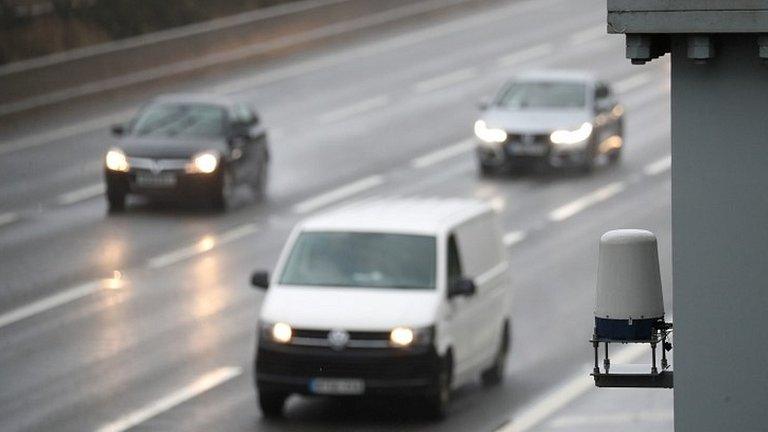M27 smart motorway work delayed until next year
- Published

New ALR motorways are required to have radar-based stopped vehicle detection (SVD) technology
Work to make the M27 a smart motorway has suffered another delay, and is now not due to be completed until 2022.
The M27 in Hampshire was due to have "all lane running" (ALR) roads completed this year. The works between junctions four and 11 were initially due to be finished in the summer.
The government said no new ALR motorway would open without radar-based stopped vehicle detection (SVD) technology.
Highways England said it was "making good progress with the upgrade".
Smart motorways use technology and other measures to cut congestion, such as opening the hard shoulder.
But there have been concerns about their safety after fatal accidents involving stationary cars being hit from behind.
In April, Transport Secretary Grant Shapps announced no new ALR motorways would be opened without the SVD technology to spot stopped vehicles and enable lanes to be closed where necessary.
Highways England added: "We are grateful for everyone's patience while we complete this work, and we expect the upgrade to be fully open in spring 2022."

Analysis
By Paul Clifton, BBC South transport correspondent
It seems to be taking forever to finish the smart motorway sections on the M27 between Portsmouth and Southampton, and on the M4 between Reading and West London.
For months, drivers on both motorways have been looking at hard shoulders that have been fully converted into a fourth driving lane.
But they remain coned off. Out of use.
Smart motorways remain hugely controversial. With the extra lane, they can carry more traffic than traditional motorways with hard shoulders.
But many MPs are against them.
Road safety organisations, including the AA and RAC, have consistently argued they are less safe than motorways with hard shoulders.
Highways England maintains that isn't true.
But the Department for Transport was sufficiently worried that it paused the opening of any more smart motorways until radar-based stopped vehicle detection technology is ready.
It is meant to identify a stationary vehicle in a live driving lane within 20 seconds, and alert control room staff.
That system isn't in place on these motorways yet. And until it is, the upgraded sections won't be opened. The cones will stay.

Follow BBC South on Facebook, external, Twitter, external, or Instagram, external. Send your story ideas to south.newsonline@bbc.co.uk, external.
Related topics
- Published21 April 2021

- Published20 April 2021

- Published26 February 2021

- Published18 January 2021
